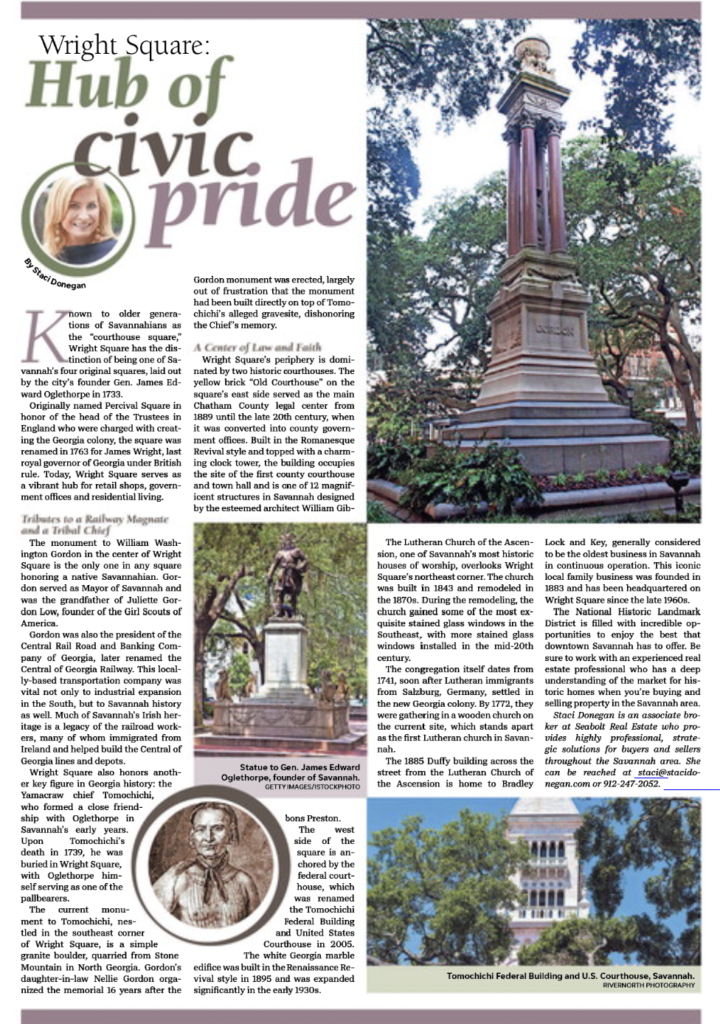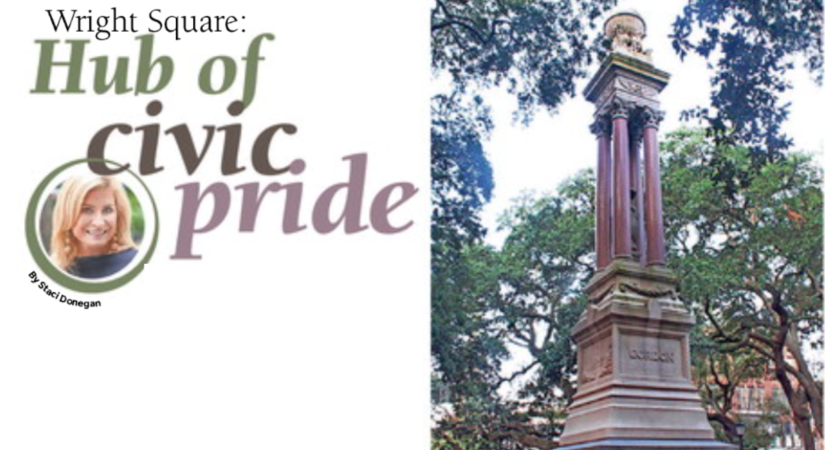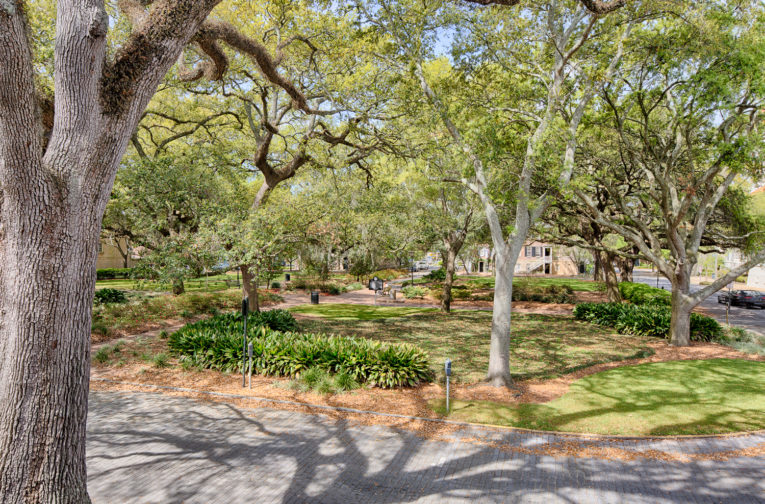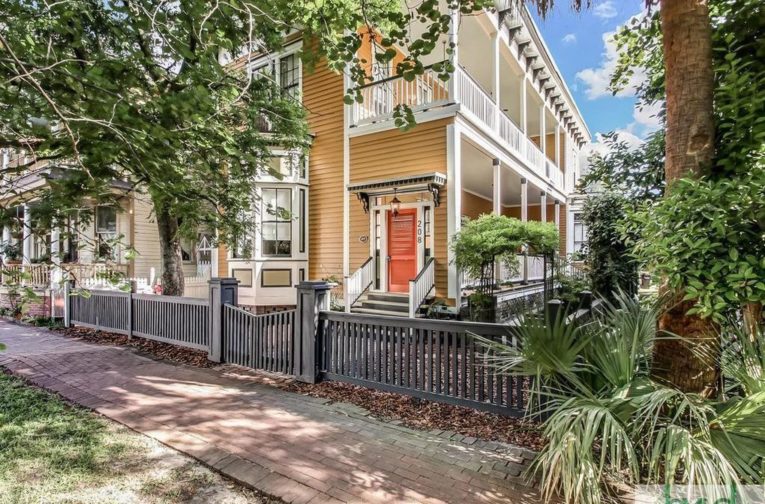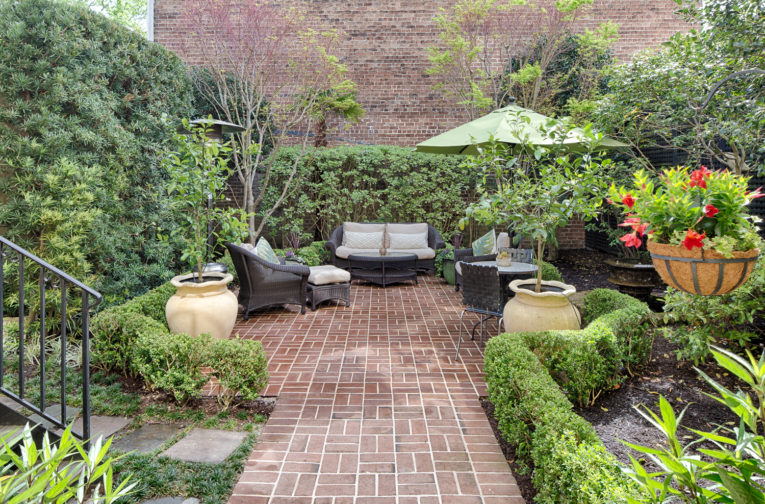Known to older generations of Savannahians as the “courthouse square,” Wright Square has the distinction of being one of Savannah’s four original squares, laid out by the city’s founder Gen. James Edward Oglethorpe in 1733.
Originally named Percival Square in honor of the head of the Trustees in England who were charged with creating the Georgia colony, the square was renamed in 1763 for James Wright, last royal governor of Georgia under British rule. Today, Wright Square serves as a vibrant hub for retail shops, government offices and residential living.
Tributes to a Railway Magnate and a Tribal Chief
The monument to William Washington Gordon in the center of Wright Square is the only one in any square honoring a native Savannahian. Gordon served as Mayor of Savannah and was the grandfather of Juliette Gordon Low, founder of the Girl Scouts of America.
Gordon was also the president of the Central Rail Road and Banking Company of Georgia, later renamed the Central of Georgia Railway. This locally-based transportation company was vital not only to industrial expansion in the South, but to Savannah history as well. Much of Savannah’s Irish heritage is a legacy of the railroad workers, many of whom immigrated from Ireland and helped build the Central of Georgia lines and depots.
Wright Square also honors another key figure in Georgia history: the Yamacraw chief Tomochichi, who formed a close friendship with Oglethorpe in Savannah’s early years. Upon Tomochichi’s death in 1739, he was buried in Wright Square, with Oglethorpe himself serving as one of the pallbearers.
The current monument to Tomochichi, nestled in the southeast corner of Wright Square, is a simple granite boulder, quarried from Stone Mountain in North Georgia. Gordon’s daughter-in-law Nellie Gordon organized the memorial 16 years after the Gordon monument was erected, largely out of frustration that the monument had been built directly on top of Tomochichi’s alleged gravesite, dishonoring the Chief’s memory.
A Center of Law and Faith
Wright Square’s periphery is dominated by two historic courthouses. The yellow brick “Old Courthouse” on the square’s east side served as the main Chatham County legal center from 1889 until the late 20th century, when it was converted into county government offices. Built in the Romanesque Revival style and topped with a charming clock tower, the building occupies the site of the first county courthouse and town hall and is one of 12 magnificent structures in Savannah designed by the esteemed architect William Gibbons Preston.
The west side of the square is anchored by the federal courthouse, which was renamed the Tomochichi Federal Building and United States Courthouse in 2005. The white Georgia marble edifice was built in the Renaissance Revival style in 1895 and was expanded significantly in the early 1930s.
The Lutheran Church of the Ascension, one of Savannah’s most historic houses of worship, overlooks Wright Square’s northeast corner. The church was built in 1843 and remodeled in the 1870s. During the remodeling, the church gained some of the most exquisite stained glass windows in the Southeast, with more stained glass windows installed in the mid-20th century.
The congregation itself dates from 1741, soon after Lutheran immigrants from Salzburg, Germany, settled in the new Georgia colony. By 1772, they were gathering in a wooden church on the current site, which stands apart as the first Lutheran church in Savannah.
The 1885 Duffy building across the street from the Lutheran Church of the Ascension is home to Bradley Lock and Key, generally considered to be the oldest business in Savannah in continuous operation. This iconic local family business was founded in 1883 and has been headquartered on Wright Square since the late 1960s.
The National Historic Landmark District is filled with incredible opportunities to enjoy the best that downtown Savannah has to offer. Be sure to work with an experienced real estate professional who has a deep understanding of the market for historic homes when you’re buying and selling property in the Savannah area.
